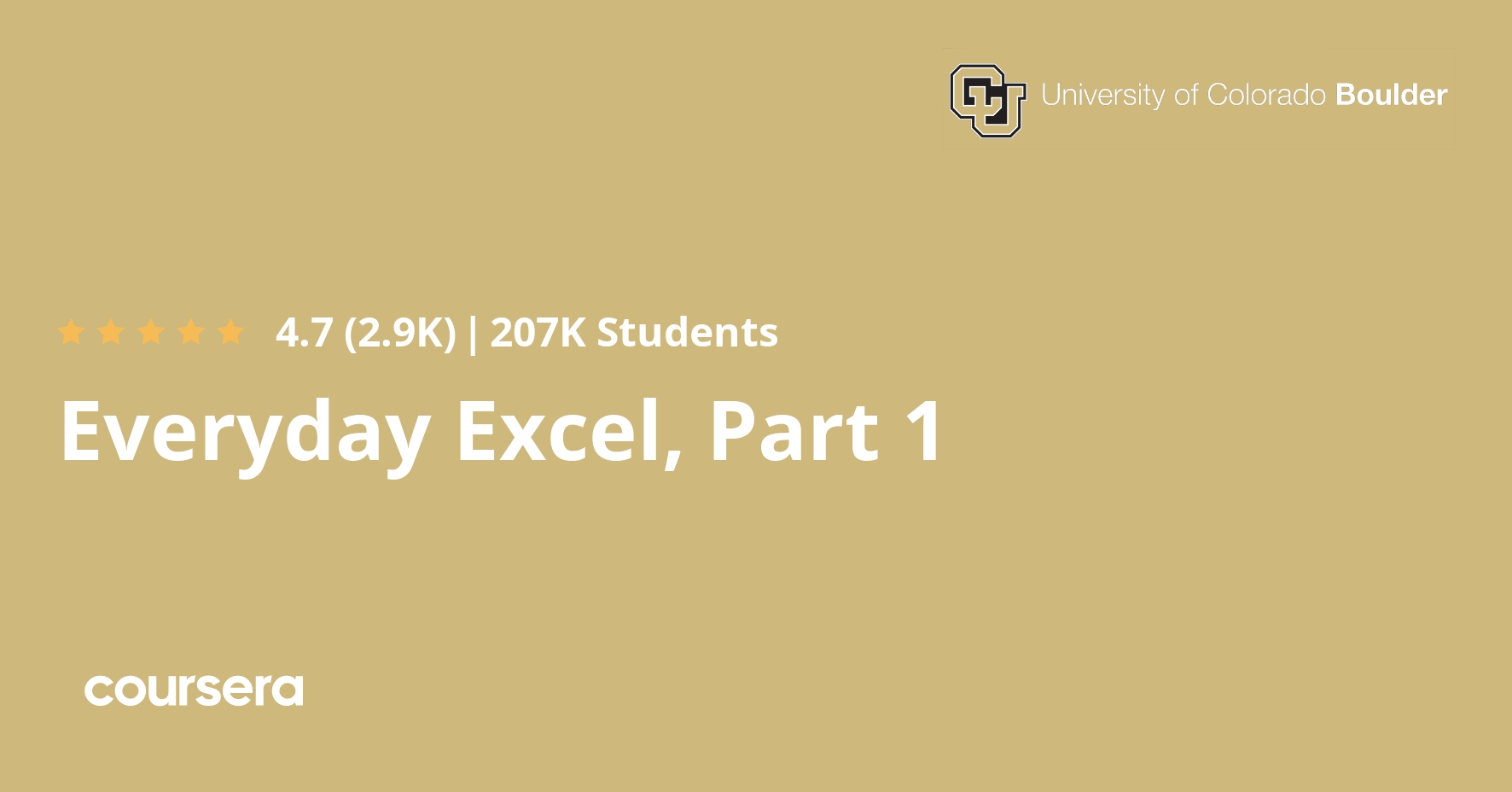Description
“Everyday Excel, Part 1” is aimed at learners who are seeking to learn Excel from the ground up. No experience with Excel is necessary. While this course is meant for beginners of Excel, advanced users will undoubtedly pick up new skills and tools.
This course is the first part of a three-part series and Specialization that focuses on teaching introductory through very advanced techniques and tools in Excel. In this course (Part 1), you will: 1) learn how to effectively navigate around the Excel environment; 2) edit and format Excel worksheets; 3) implement basic to advanced Excel functions (including financial, logical, and text functions); 4) learn how to manage data sets (filter, remove duplicates, consolidate data, sort data, and validate data); and 5) learn how to effectively visualize data through scatterplots, column charts, and pie charts.
New to Excel? That is entirely fine! This course is meant to be fun, thought-provoking, and appeal to a wide audience. No prior knowledge in programming nor advanced math skills are necessary. The course is organized into 5 Weeks (modules).
To pass each module, you’ll need to pass a mastery quiz and complete a problem solving assignment. This course is unique in that the weekly assignments are completed in-application (i.e., on your own computer in Excel), providing you with valuable hands-on training.
What you will learn
Navigating Excel
In Week 1, you will learn basic worksheet navigation, how to open and save Excel files, and all about worksheets and workbooks. You will learn the difference between cells, columns, and rows in Excel, as well as cell references. You will learn how to move around the worksheet effectively using shortcut key combinations, and you will learn how to edit the worksheet. You will also learn how to format cells, conditionally format cells, and how to change between number, text, date, currency, and other cell formatting options. There will be particular emphasis on relative vs. absolute cell addressing modes and you will learn how to name cells and cell ranges. You will be introduced to basic macro recording using VBA and you will learn how to set personal preferences in Excel. Week 1 will conclude with a required quiz and an on-computer, in-application assignment. When you successfully complete Assignment 1, you will be given a “completion code”, which you can input into the Assignment 1 submission quiz to earn credit for the assignment. The Week 2 material will be released when you have successfully passed Quiz 1 and Assignment 1. Good luck!
Expression Entry and Common Excel Functions
In Week 2 you will learn about how to properly write Excel syntax. You will learn the order of operations, how to input mathematical formulas into Excel, and how to troubleshoot when things don’t go as expected. You will be introduced to just a few of the thousands of built in functions in Excel. The functions that you will learn about in this module relate to summing, counting, averaging, how to round numbers and calculate remainders, random number generation, and combinations and permutations. Week 2 concludes with a quiz and an on-computer, in-application assignment. Upon successful completion of these items, the Week 3 material will be unlocked. Good luck and have fun!
More Excel functions
In Week 3, you will learn more advanced functions in Excel. These include logical functions (IF, AND, OR) and advanced logical functions (SUMIF, COUNTIF, AVERAGEIF). You will learn how to effectively use Auto Fill and Fill Series but then I explain how to use text functions, which overcome some of the limitations of the Auto Fill feature. You will be introduced to Excel’s financial functions (many more financial functions will be covered in Part 2 of the course), and you will learn how to use array formulas in Excel. Finally, I show how you can create your own user-defined function in VBA. Week 3 concludes with a quiz and on-computer, in-application assignment. When completed successfully, the Week 4 material will be released. Good luck!
Managing Data
Week 4 really gets at the heart of why Excel is so great for managing data. You will learn how to apply a filter, how to create an Excel Table, and how to validate data (for example, by only allowing items in a drop-down list). You will learn how to sort data, how to clean up data prior to using, how to remove duplicates in your data, and how to consolidate data from multiple sources. Finally you will learn how to use one-way lookup functions in Excel (VLOOKUP and the INDEX/MATCH combination). Quiz 4 and the on-computer, in-application Assignment 4 will test your understanding of the material in Week 4. Once you’ve completed these assessments, the Week 5 material will be unlocked. Good luck and have fun!





